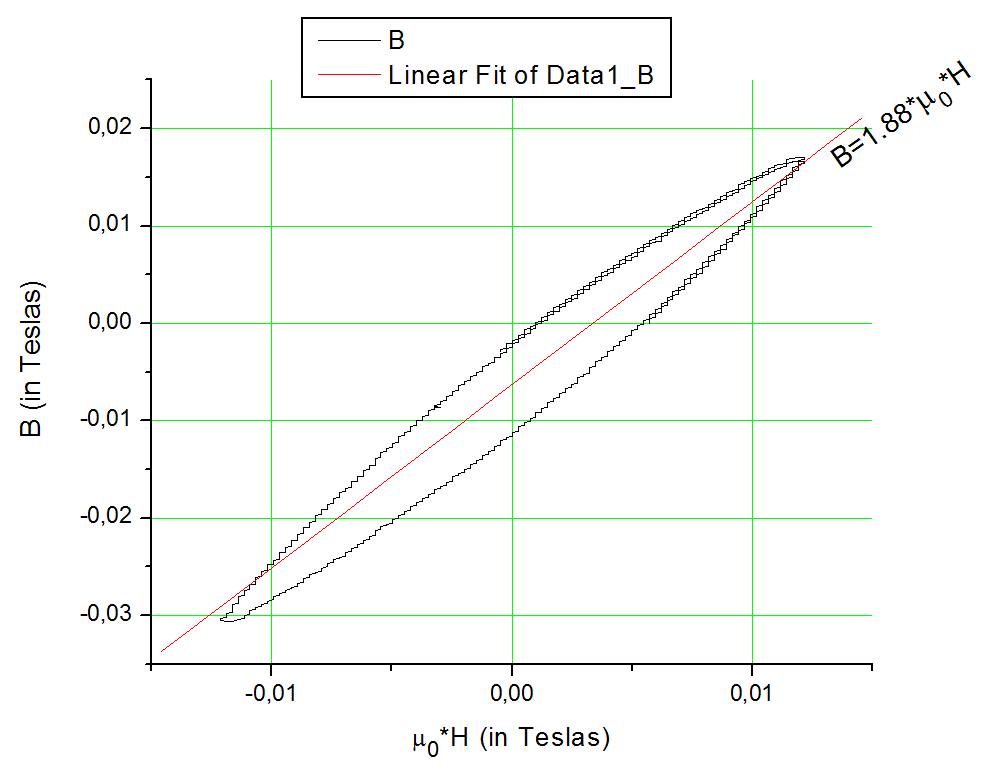-
Is it possible to make better ferromagnetic filament?
04/17/2016 at 22:17 • 3 commentsSo, did BlackMagic3D fail to make a useful thing because they haven't worked/researched hard enough, or the idea of 3d-printable ferromagnetic material is doomed from the beginning?
I don't have the answer, but I have a guess. To make something go smoothly through extruder, one needs to put quite a lot of plastic into it. A wild guess will be 60% by volume has to be plastic.
Ferromagnetic particles can have permeability that is very high. But it probably doesn't matter how high it actually is, because as it is mixed with non-magnetic material, the gaps between particles will probably become the dominant reluctance of the system, and will totally determine the permeability. So, it will probably make little difference to mix in particles with a permeability of 100 or of 100000. It will look more like a gapped inductor with a huge gap of 60% or so of length of magnetic circuit. That is, like made of material having permeability of about 1/60%, i.e. about 2.
So, to me it looks like the idea of making 3d-printable ferromagnetic material by adding metal powder to plastic is fundamentally doomed. But I would love to be proven wrong on this opinion.
PS. Do you think a material with permeability of 2 is useful for something? Post a comment! So far, I haven't invented any application. -
Other properties of the filament
04/17/2016 at 20:29 • 0 commentsHere are some other impressions from 3d printing with this filament.
The filament diameter measures 1.75 mm spot on, thumbs up BlackMagic3D.
It prints very well with a nozzle diameter of 0.5 mm. I like the quality, and the lack of stringing.
Surface texture is rough, with shiny black surface (it somewhat resembles that of ferrites, or of an iron rod heavily oxidized by heating in air, or packages of integrated circuits). It's a pleasure to touch.
The printout is not particularly heavy. It is heavier than normal PLA, but not much.
I had some problems with sticking to glass. First time it went perfectly, but second time it peeled off like hell. I don't know what happened, but wiping glass with acetone helped.
My printouts were small to say anything about warping, but those small prints did not suffer any delamination due to warping.
As for attraction to magnets. It is attracted. But ferrites beat it by a large margin. And bulk iron gets even much stronger attraction than ferrites. So... yes, it, attracts, but I struggle to find any real use for the filament.
-
Quick crude result
04/16/2016 at 23:43 • 0 commentsEDIT: WRONG CURVE! Found an error!
I've just measured and did calculations. Arrived to a result.
![]() I will publish the methodology and calculation formulas later, verifying them in the process. This is just a kind of teaser.
I will publish the methodology and calculation formulas later, verifying them in the process. This is just a kind of teaser.From this B-H curve, I obtained a permeability of the material of about 2. That is, two times more than that of vacuum. That's absolutely and totally hopeless, I have to say. To consider the material any kind of useful, I need the value of at least 10.
For comparison, typical permeability of transformer core steel is about 4000, according to Wikipedia.
And look at that huge area! This means that losses are huge!
So, the conclusion so far is that the material is useless. Hopefully, I will find a mistake in my crude calculations. But from how it attracts to magnets, I can pretty much tell that permeability=2 is plausible.
I could not achieve saturation with my test coil. This is very much expected considering the very low permeability.
Measuring BlackMagic3D's ferromagnetic filament
Measuring hysteresis curve to determine how useful is that stuff for building motors and magnetic circuits
 DeepSOIC
DeepSOIC I will publish the methodology and calculation formulas later, verifying them in the process. This is just a kind of teaser.
I will publish the methodology and calculation formulas later, verifying them in the process. This is just a kind of teaser.